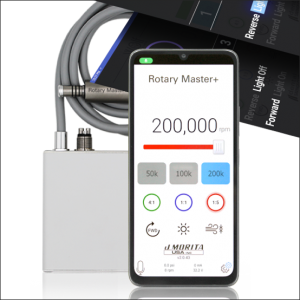
Is there a correlation between orthodontic movements and pulp necrosis induction?
Simona Chirico
The orthodontic treatment aims to correct and resolve malocclusions or even to improve aesthetics by realigning the dental elements. During orthodontic treatment, forces are developed and applied to teeth and the surrounding structures in order to promote teeth movements. it has been reported that teeth undergoing orthodontic movement for an extended time and with excessive force are more susceptible to develop inflammatory root resorption, pulp stones and invasive cervical resorptions. Such histological changes on the dental pulp may lead to the loss of pulp vitality, leading to the need of a root canal treatment.
Several studies have been performed to verify the effects of orthodontic treatment on pulp. To evaluate pulp vitality they used different methods: periapical and panoramic radiographs, electric and thermal sensitivity tests.
It is well established that periapical and panoramic radiographs provide limited information due to the two-dimensional images provided, which can lead to an erroneous diagnosis. Also, electrical and thermal sensitivity tests evaluate only the neural response of the tested tooth, regardless of the presence or absence of blood circulation, providing subjective and limited results. Laser Doppler flowmetry (LDF) and pulse oximetry (PO) have been evaluated as diagnostic methods to verify pulp status by assessing the pulp blood flow, without relying on the patients’ response, and, when compared to the other diagnostic methods, are considered to be the most accurate.
The study conducted by Weissheimer et al, published on the International Journal of Endodontics, try to find the answer to this question by analyzing articles in which pulp vitality was evaluated by LDF and PO.
Materials and Methods:
A systematic search of articles published until June 2020 was performed using MeSH and free terms in the PubMed, Cochrane Library, LILACS, SciELO, Web of Science, EMBASE, Open Grey, and Grey Literature databases. Randomised clinical trials (RCTs), nonrandomised clinical trials (nRCTs), and longitudinal (prospective or retrospective) studies that evaluated the pulp status of teeth subjected to orthodontic movements using laser Doppler flowmetry or pulse oximetry were included. From 353 studies, only 14 met the inclusion criteria and were selected for full-text reading.
Results
Four RCTs were classified as having an unclear risk of bias and one as having a high risk of bias.
The nRCT was classified as having a low risk of bias.
Two prospective studies were classified as having a moderate risk of bias and four as having a serious risk of bias.
The GRADE analysis demonstrated a low to very low quality of evidence.
Conclusions
This systematic review indicates that orthodontic movements do not induce loss of pulp vitality with low to very low certainty of evidence.
(Photocredit: Prof. Massimo Gagliani)
For additional information: Do orthodontic tooth movements induce pulp necrosis? A systematic review
 Tag
Tag
 Read more
Read more
Oral pathology 25 November 2025
Virtual microscopy (VM) is a technology for showing microscope slides using computers and could be considered a progression of classic methodology using optical microscopes.
For every assist this season, the insurance provider will donate $25 to TUSDM Cares for Veterans
Products 25 November 2025
J. MORITA USA, a world leader in handpiece technology, has announced the Rotary Master+ Electric Motor. Compatible with Morita TorqTech electric attachments and most competing electric handpieces on...
News 25 November 2025
Let’s be honest: nothing kills the vibe quite like bad breath. However, while 85% of people prefer for someone to tell them if their breath needs some freshening up, only 15% are willing to break...
News 25 November 2025
Vitana Pediatric & Orthodontic Partners (Vitana), a dentist-led dental partnership organization (DPO) focused exclusively on elite pediatric dental and orthodontic practices with operations in...










